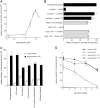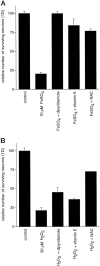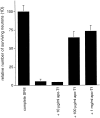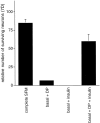Neuroprotective actions of dipyridamole on cultured CNS neurons
- PMID: 9651195
- PMCID: PMC6793500
- DOI: 10.1523/JNEUROSCI.18-14-05112.1998
Neuroprotective actions of dipyridamole on cultured CNS neurons
Abstract
We report that dipyridamole is neuroprotective for a variety of rat embryonic CNS neurons cultured in serum-free basal medium lacking trophic factors or other additives. We also describe the mechanism underlying this action. Neurons died rapidly in basal medium but were rescued in large measure by 10 microM dipyridamole. The protective action of dipyridamole seems to be attributable to its antioxidant property. Vitamin E and N-acetylcysteine provided comparable neuroprotection in basal medium, whereas an array of compounds that mimic other actions of dipyridamole (inhibition of phosphodiesterases, blockade of nucleoside and chloride transport, interference with the multidrug resistance protein, and enhancement of prostacyclin synthesis) failed to promote survival. Thus, a major cause of neuronal death in this system seems to be oxidative stress that is relieved by dipyridamole. Iron plays a significant role in generation of such stress, as indicated by the observations that addition of apotransferrin or iron chelators to basal medium or use of iron-free medium also afforded protection. Although oxidative stress was a major determinant of neuronal death, it was not the only factor. Dipyridamole or other antioxidant measures did not provide sustained neuroprotection. However, provision of insulin, which was not protective alone in basal medium, along with dipyridamole significantly enhanced long-term neuronal survival. Hence, optimal protection requires both trophic support and relief from oxidative stress. These findings lend credence to the potential use of dipyridamole or its derivatives in prevention and/or treatment of CNS injuries and degenerative disorders in which oxidative stress is a significant component.
Figures









References
-
- Ayesh S, Shao YM, Stein WD. Co-operative, competitive and non-competitive interactions between modulators of p-glycoprotein. Biochim Biophys Acta. 1996;1316:8–18. - PubMed
-
- Barbin G, Selak I, Manthorpe M, Varon S. Use of central neuronal cultures for the detection of neuronotrophic agents. Neuroscience. 1984;12:33–43. - PubMed
Publication types
MeSH terms
Substances
Grants and funding
LinkOut - more resources
Full Text Sources
Other Literature Sources
